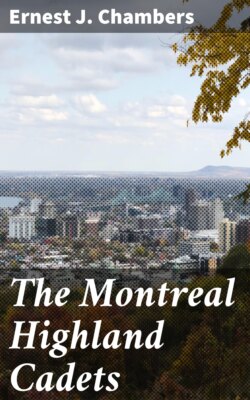Читать книгу The Montreal Highland Cadets - Ernest J. Chambers - Страница 7
На сайте Литреса книга снята с продажи.
CHAPTER I.
ОглавлениеTable of Contents
BRITISH CADET CORPS.
The boy is the father of the man; the cadet the natural, logical foundation of the best soldier.
The military term cadet is derived from the French word “cadet,” younger, junior in service, and is allied in derivation to cadency in heraldry. It is a term applied in general sense to a junior member of a noble family as distinguished from the eldest; and in France any officer junior to another is a cadet in respect to him. In a strict military sense, however, a cadet is a youth studying the science of arms.
The squires of old feudal days were cadets. With the disappearance of the feudal system, the development of the military science, the establishment of national armies and the necessity of providing educated officers therefor, came the establishment of cadet schools on the continent and in England, the first private institutions in time giving way to public colleges maintained by the state.
The volunteer movement in Great Britain, which owed its origin to the wave of patriotic feeling which swept through the “Tight Little Isle” in the years 1858-59, in a most natural way imaginable produced at a very early stage of its own existence the volunteer cadet movement.
There had been some effort to form cadet corps in the stirring years at the opening of the 19th Century, and Rugby College, in 1801 or thereabouts, had a boy’s corps armed with wooden swords. It was not a lasting movement, however.
The Queen’s (Westminster) Cadet Corps, it is claimed, was the germ from which all the cadet companies of Great Britain have sprung. In 1859, a member of that regiment, who, as a physician, was conscious of the value of military exercise for improving the general health and physique of boys in every way, was induced to dress his two young sons in the uniform that had been chosen for the corps with the view of inspiring them, through early associations, with a lasting interest in the volunteer movement which was then fairly commencing. This action was objected to by some of the officers and members of the regiment on the ground that such a course was calculated to throw ridicule on the volunteer movement. For, like everything else that has proved any good in this world, the pioneers of the volunteer service were made the butt of much ignorant ridicule at first.
So the officers who objected to the boy soldiers pointed out that volunteers of larger growth had already been greeted with derision by some, and with a sneer by others; and if boys were seen running about in the uniform of any regiment, a louder outcry than ever would be raised against the utility and expediency of the young, and still over-sensitive, volunteer service. However, the gentleman in question kept his sons in uniform, and Earl Grosvenor, the Lieutenant-Colonel of the Queen’s Westminster, always favorable to the cadet movement, suggested that other boys should be sought for who would keep the first wearers of the volunteer cadet uniform in countenance, and that a company of cadets should be forthwith embodied in connection with the regiment.
This was no sooner proposed than it was carried into effect; an able and persuasive advocate of the formation of the corps was found in the mother of the lads who first put on the uniform, and with such energy was the scheme promoted and carried out that about thirty-five cadets marched into Hyde Park, in front of the Queen’s Westminster Rifle Volunteers on the occasion of the first big volunteer review in May, 1860, and were honored by the special notice of His Royal Highness the Duke of Cambridge, who posted them in such a position during the march past Her Majesty, our late deeply beloved and lamented Queen, that they could see everything that took place, and be seen by all on the ground.
There is some doubt, however, as to whether the honor of priority does not belong to the Eton College Rifle Corps. It is a matter of history that this corps was organized in January, 1860, and that the Eton battalion, three hundred strong, and wearing the familiar grey uniform with light blue facings, was reviewed by Queen Victoria and the Prince Consort, at Windsor, in the spring of 1860.
